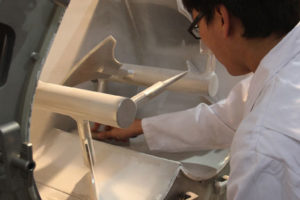Gericke engineer offers guidance when ingredients dip below one percent of mixture
Many product development professionals adding probiotics, herbs, spices, trace elements, and/or other delicate ingredients in small quantities to their food, beverage, and nutrition products struggle with end product uniformity. Ingredients that dip near or below one percent of the mixture – called microingredients -are not only challenging to mix evenly but they also typically cost more than traditional ingredients and their sensitive properties often require special consideration in processing. Rene Meira Medina, executive vice president of Gericke USA, Somerset, NJ (www.gerickegroup.com) offers the following considerations for achieving the required homogeneity when mixing microingredients:
Protecting Microingredients
Exposure to the plant environment during powder transfer can invite contamination from humidity, ambient dust, pests, and other sources, and cross-contamination from residues left in machinery. A minute amount of contamination can devastate a minute proportion of microingredients. To safeguard their purity, many process engineers specify enclosed conveyors such as pneumatic conveying systems that automatically transfer the materials directly from storage to the mixer and eliminate risk of exposure.
Precise Feeding to Mixer
Due to the small volumes, even tiny errors in feeding can cause huge discrepancies between the target quality specifications and the actual product discharged from the mixer. To ensure exactly the required amounts of microingredients are fed to the mixer, many processors specify automated loss-in-weight (LIW) feeders. These gravimetric feeders weigh a preset amount of material then gently dose it into the mixer. When feeding regulated materials as microingredients, this computer-control provides both the accuracy to ensure quality and the documentation to meet regulatory requirements.
Mixer Selection
Mixers that apply radial dispersion via rotation, and a combination of axial flow (moving parallel to a mixing rotor) and radial flow (moving perpendicular to a mixing rotor) create the turbulence needed to draw ingredients from the sides and from at and below the surface and direct them to the mixing zone without losing the precious microingredients at the outer edges. An example is the GMS Multiflux® batch mixer, which typically yields a homogeneous mix within 30 seconds. By contrast, ribbon blenders lack the forward and backward motion provided by radial dispersion and planetary mixers often apply high amounts of shear that can damage sensitive microingredients.








